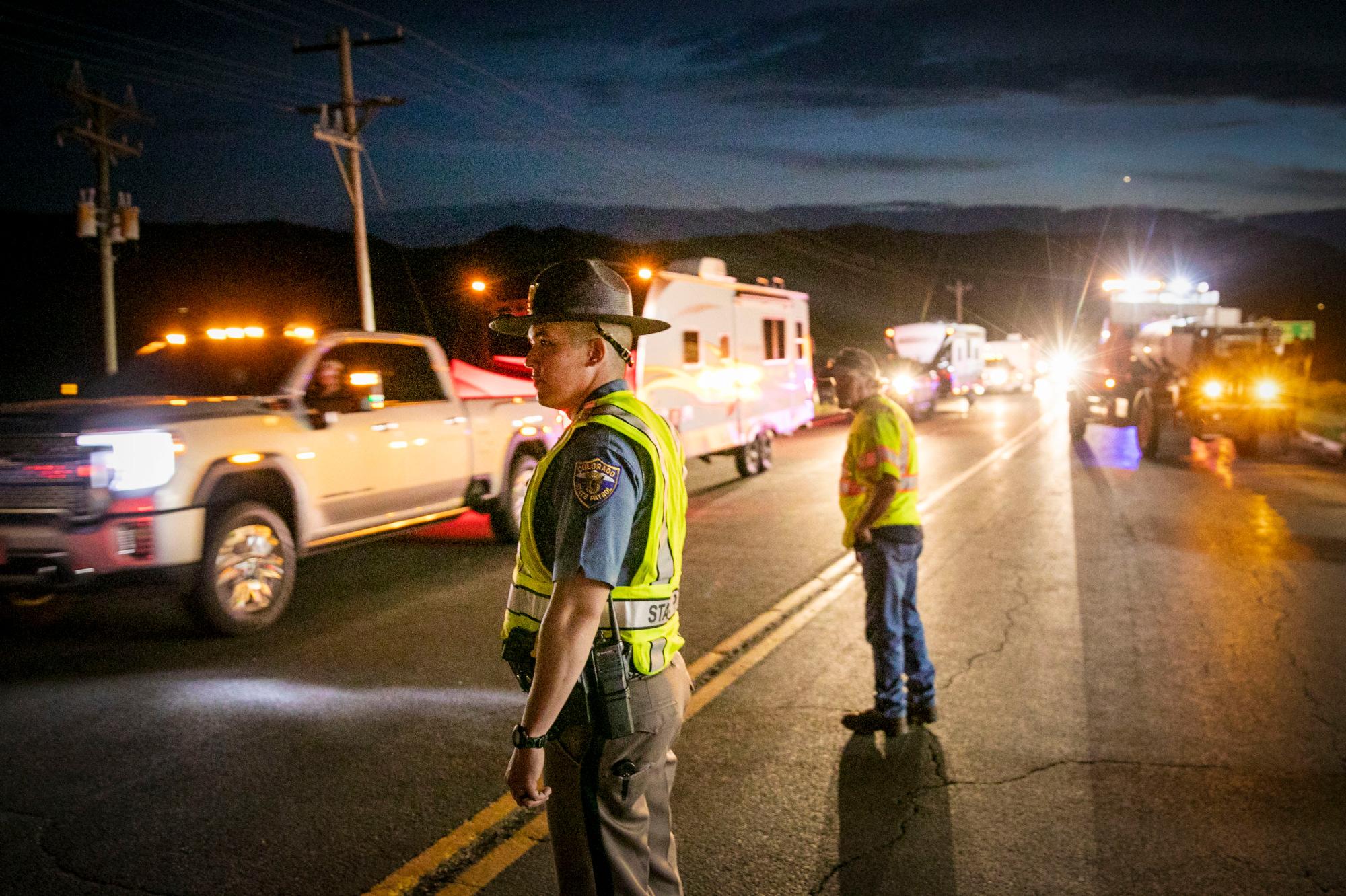
Updated July 22 at 12:41 p.m.
Officials are still searching for three people who went missing during Tuesday night’s flash flood in the upper part of Poudre Canyon. The Larimer Sheriff’s office confirmed they recovered the body of a woman on Wednesday. Five houses have been confirmed destroyed, but damage assessments are ongoing.
Residents along Highway 14 were not asked to evacuate again Wednesday, despite an afternoon flash flood warning in Larimer County. The highway has reopened west of Fort Collins, but campgrounds and river access points remain closed due to dangerous water conditions created by debris runoff from Tuesday night’s flood.
The Larimer County Board of Commissioners declared a disaster emergency Wednesday night due to the flood's impact on safety and infrastructure. The declaration allows them to access state and federal resources as needed. It will remain in effect for a week, unless it’s extended or prematurely rescinded.
Officials said the Joint Information Center, where those affected by the flooding could talk with an agent and get information, closed Wednesday evening. There are no plans for it to reopen.
The flooding occurred around the burn scar of the Cameron Peak Fire, the largest recorded fire in Colorado history. Only an inch of rain fell in half an hour. Experts said even that small amount of rain could be enough for debris from the burn scar to flow downstream and cause damage to homes and campsites.
Burn scars are more susceptible to flash flooding in the two years following a wildfire. These scorch marks are likely to get bigger and more common in the coming years, with forest fires expected to become larger and more unpredictable due to drier and hotter conditions spurred on by human-caused climate change.









